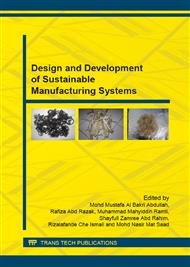p.203
p.212
p.216
p.221
p.229
p.234
p.238
p.243
p.253
Radiation Enhancement Using Circular Split Ring Meta-Surface Mirror for a Small Patch Resonator
Abstract:
This paper investigate the radiation efficiency enhancement for a small square patch resonator with the integration of single layer circular split ring metasurface mirror (CSRMM) operating at 5.8 GHz using Transmission Line Matrix (TLM) method. The single layer CSRMM provide an appropriate reflection phase to act as a mirror and is able to enhance the resonator gain and efficiency. This work shows a linear phase response from 5.8 GHz to 5.9929 GHz that is sufficient for 50 Ω wireless communication system operation. A siginificant improvement of 0.391 to 0.741 dBi IEEE gain over the whole frequency range was demonstrated. The resonator has an initial radiation efficiency of 0.246 and incremented to 0.406 once CSRMM is inserted. The resonator small size configuration provides adequate space for mounting the mirror close to the resonator, making it more fitting for modern wireless devices.
Info:
Periodical:
Pages:
229-233
Citation:
Online since:
November 2015
Authors:
Keywords:
Price:
Сopyright:
© 2015 Trans Tech Publications Ltd. All Rights Reserved
Share:
Citation:


